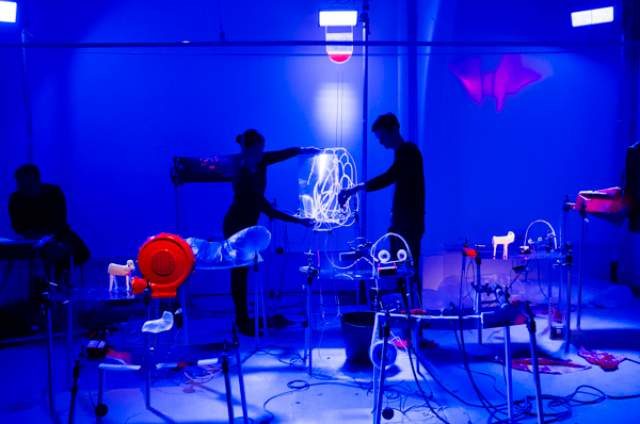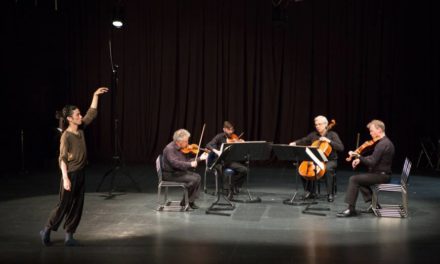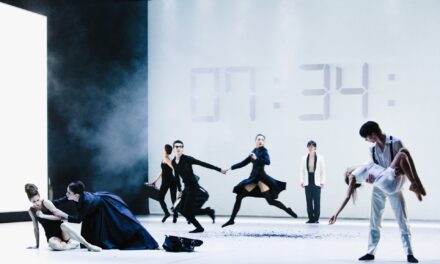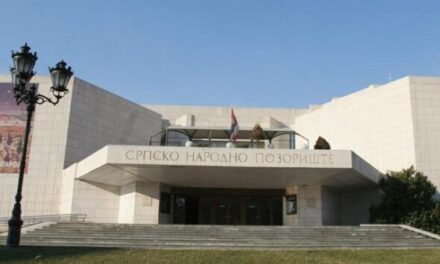
Mark Deputter. Photo by José Frade.
Mark Deputter was born in 1961 in Belgium. He studied Germanic Languages and Literature, followed by a postgraduate qualification in Drama and Theatre at the University of Leuven. He actively participated in the creation of the Institute for Theatre Studies, the first of its kind in Belgium. He was also a member of the editorial board for Etcetera theatre journal, regularly publishing articles on theatre and dance. In 1988, he became artistic director of the STUC, a small independent cultural centre connected to the University of Leuven. During the eight years of his artistic directorship, STUC became one of the most active and influential centers of theatre in Belgium, programming important works from STAN, Forced Entertainment, Alain Platel, and more. Mark moved to Lisbon in 1995, where he became artistic co-director (with Mónica Lapa) of the Dance in the City festival, presenting, among others, Jérôme Bel, Meg Stuart, Vera Mantero and Francisco Camacho. Later, he joined Miguel Lobo Antunes’ programming team at Centro Cultural de Belém, where he was responsible for the dance program until 2001. In 2005, Mark created Alkantara Festival, a major European performing arts and dance festival in Lisbon and was responsible for the first two festival editions in 2006 and 2008, before becoming artistic director of Teatro Maria Matos in Lisbon in October 2008.
Szabolcs Musca: It seems to me that Teatro Maria Matos is a unique theatre institution in Lisbon, but also in Portugal as it goes beyond the traditional functions of a bourgeois theatre and it tackles strong and important sociopolitical themes in its programming. How do you see the place of Teatro Maria Matos in the national theatre landscape, and more specifically in Lisbon?
Mark Deputter: I think what we did is really unique in Portugal. I don’t know of another theatre that does something similar at the same rate or the way we do here. In fact, what we have tried to do is accompany new developments in contemporary performing arts. Broadly speaking, from the 1990s up until the beginning of 2000s, the theatre was very much focused on itself and reinventing a kind of post-dramatic theatre, new forms of theatre-making. During these years, the theatre was aesthetically working on itself — which is interesting of course — but it has become clear that many artists are moving towards a more political theatre: they want to be more embedded within society, be part of civil society, and have a say in the political debates. And so what we did is accompany that movement and say: as a theatre, we are no longer going to be a neutral space but instead, we want to create an identity that puts this theatre in the middle of nowadays’ political debates. Making that shift may not seem very dramatic, but it does have an important impact on the work we do and in the way this theatre functions in society. Of course, that doesn’t mean that we see ourselves as political in terms of party politics. I would never want to do that.
We are a city theatre, a publicly funded institution, and shouldn’t embrace any particular political point of view. But as a contemporary theatre, we feel that we need to reflect on the world, the city, and the country where we are based… We generate public debates to create a “sound-box” context for the work of the artists we present here.
SM: The artistic program at Teatro Maria Matos is heavily international. To what extent would you define the theatre as “the international theatre” of Portugal?

Teatro Maria Matos building. Photo by Vera Marmelo.
MD: Teatro Maria Matos has the most international program in the country. It’s not necessarily an ambition that I had, to be the most international, but I simply find it necessary for contemporary projects to be international. I cannot imagine a program that would be only local because, to start, the artistic community and the artists themselves are very much linked internationally. Secondly, because none of the questions that are politically relevant can be discussed exclusively on a local or national level. Of course, all debates have local implications and resonances. But they are so much linked nowadays that I cannot think of one single issue that you could say: “Ah, this is only here.” Because they all have international repercussions and lots of them can only be really thought through in their links between the local and international.
SM: How do you negotiate local and global values in your programming? Is there a conflict between the two principles, and how do you manage to combine these two elements in your programming to present relevant approaches for both local spectators and the global artistic world?
MD: It’s a one-million-dollar question for international programming…
SM: Yes, I suppose it’s a balancing act.
MD: It’s always a balancing act, but for me here at Teatro Maria Matos there are some principles that I like to follow in this respect. One thing is very important when I do international programming. I’m interested in bringing in productions that are not necessarily available here, so I often select proposals that can have an impact because they open up windows or present perspectives that are not readily available here. These artistic proposals can spark new ideas with local artists and also with our audience, so it broadens horizons. I think it’s less interesting for us to invite great examples from established theatres.
SM: So, the focus is not on presenting flagship international productions and canonical aesthetics.
MD: No, because I think that would work within relatively known parameters, scope, and limits and it’s not what I feel is necessary for our context. Of course, we are in a lucky situation here in Lisbon because there are many different theatres with their own projects and their own programming, so there are other theatres who can do that: Centro Cultural de Belém (CCB), Teatro National Dona Maria II, or Teatro São Luiz. I am mostly looking for weird things.
SM: Productions that might enrich the local art scene or have a direct effect on artists and the structures?
MD: Yes, exactly. Our priority is what the local artistic community needs most. There is another idea I generally follow, and that is to create a long-term collaboration with international artists, to develop ongoing stories. I invite international artists regularly so they become part of the local scene. If you have an artist that comes back more or less regularly, the work of that artist will become embedded in the local landscape, because that creates a dialogue with that work and with the artists’ universe. After a while, they really become part of the local scene. Both the local audience and the artists can develop a continuous relationship with the work. They can also meet at the bar, talk and discuss issues.
SM: Social connections are important.
MD: Real connections develop. Long-term thinking and planning are very important. I often wait to see two or three pieces of work from the same artist before I decide to invite them. I want to make sure that the work I invite could be important for Lisbon. Another thing I find important is to have an open eye for artists that are not from what is considered to be the artistic or the cultural center of Europe and the world. Of course, if you are from Berlin, Paris or London that doesn’t mean that you cannot present your work here, but I’m very interested to see works from elsewhere: Latin America, Africa, the European periphery… We just presented a company from Vilnius¹, but Southern European countries are always present as well.
SM: I want to go back a bit to the status of Teatro Maria Matos. As per its legal status, the theatre is a municipal institution funded by the local authority. It’s a public theatre. As Dragan Klaic observes in Resetting the Stage: Public Theatre between Market and Democracy², public theaters are constantly under pressure to serve audiences and pursue their unique artistic program. How do you see this conflict in the case of Teatro Maria Matos? How do you work around funding expectations, if there are funding expectations, and do those funding expectations shape your artistic program?
MD: We are in a specific situation because Lisbon has two city theatres: Teatro São Luiz and Teatro Maria Matos. Before I came here, both theatres were working on the same type of programming: almost exclusively Portuguese mainstream works. Then there was a change in the city council and it was decided that it doesn’t make much sense to have two city theatres with more or less the same artistic profile. They invited me to radically change the program presented at Teatro Maria Matos, probably because of my experience as director of the international theatre and dance festival Alkantara. On the one hand, they commissioned me to develop a contemporary program, working with local independent companies and emerging artists who do not have a lot of support and who often don’t have spaces to present their work in. On the other hand, they wanted me to facilitate an international program. So, the expectations from the funding authority are fully in line with this mission, and do not include unrealistic expectations regarding audience numbers, etc. We have complete artistic freedom.
I don’t feel any limits but, as I said, I think it also has to do with this specific situation of having two publicly funded city theatres. For Teatro Maria Matos, I think it is more ambitious to develop a clear artistic profile than to simply open up the theatre to a lot of different proposals. There are two basic options: as an artistic director, one can be well-informed about what’s going on and give a bit of space to all relevant proposals, or you can have a very specific choice, be very precise and build a strong profile for your theatre. I think both options are viable — it depends a lot on the context – but I have clearly chosen the second option: a clear profile that embraces the fringe over the mainstream. Not accepting a status quo but always pushing the boundaries, always trying to put my audience and artists in a situation that is beyond what they already know, what is already accepted and incorporated in the canon. Of course, working inside the canon is much easier for an audience because they know all the codes, which allows them to access the work more easily.
SM: Do you think that is partly to do with geographical visibility as well?
MD: Teatro São Luiz is in the center of the city. It’s also an old theatre with a long tradition. Such radical programming policies wouldn’t work there, I believe. We are relatively on the outskirts and I’m fine with that.

Teatro Maria Matos building. Photo by Luis Martins.
SM: The space also determines the type of work you can present. Teatro São Luiz is situated in a historic bourgeois building, and progressive performances might be problematic in such spaces. Teatro Maria Matos is much more of a blank canvas spatially.
MD: Yes. Although it’s not completely true because this building is also an Italian-style theatre in terms of architecture. But of course it’s modernist, built in the seventies, and we can play around with space more easily. For instance, we often construct raked seating in order to turn the theatre into an arena-style theatre.
SM: How has the audience of Teatro Maria Matos changed over the years? Was there a radical change in the number of people attending the theatre or the composition of the audiences after you took over as artistic director?
MD: Yes. That, in fact, really changed because of the theatre, as I said, had a completely different function before. I used the word mainstream, but it was almost commercial theatre doing “west-end” style shows: Portuguese versions of musicals, well-known Broadway plays on a smaller scale and so on. It attracted a completely different audience and they did not stay with us after I took over. So, we started building up a new audience base. Not out of nothing, of course. For instance, the audiences of the Alkantara Festival followed us over here. And we also attracted the audiences from the small-scale companies we started presenting regularly. Many of those companies used to work with a very small audience base and now hundreds are following their work. Tiago Rodrigues is one of the most prominent examples. He has presented his work at Teatro Maria Matos for many years and for growing audiences, and now he is the artistic director of the National Theatre in Lisbon.
SM: I suppose the environment is also changing, strong working-class neighborhoods being gentrified quickly. I’m not sure if this is applicable to this specific neighborhood as well.
MD: Yes, that is true. Although I also know through our outreach that our audience doesn’t necessarily come from the surrounding neighborhoods. They are from the larger Lisbon area and beyond. Quite a few people come from cities around Lisbon. I think that is because of the specific programming…
SM: So, the location is less important for your audience.
MD: It’s the artistic project that attracts people. Our audiences have been increasing since the beginning. It is also relevant that we created an inclusive program with lectures and debates alongside performances, so that has also attracted larger audiences.
Notes
1: Have a Good Day. Opera for ten cashiers, supermarket sounds and piano, Operomanija Production, Vilnius, Lithuania, March 2017 at Teatro Maria Matos.
2: Bristol – Chicago, Intellect Publishing, 2012.
This post was written by the author in their personal capacity.The opinions expressed in this article are the author’s own and do not reflect the view of The Theatre Times, their staff or collaborators.
This post was written by Szabolcs Musca.
The views expressed here belong to the author and do not necessarily reflect our views and opinions.


















